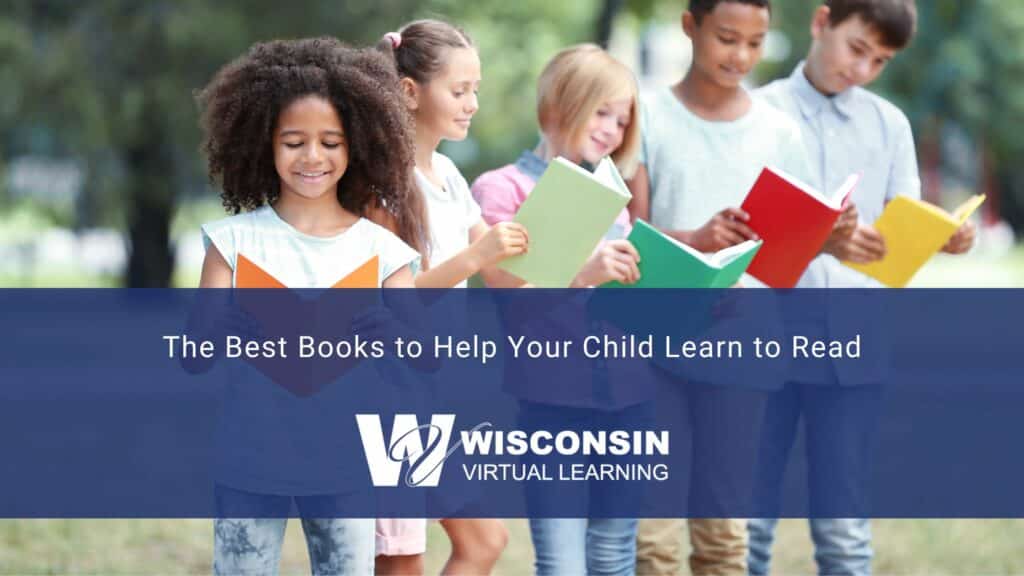Learning to read is a pivotal milestone in a child’s life. It’s the moment that opens the gateway to a world of imagination, ready to be explored. When a child has access to truly outstanding books written just for their developmental level, their chances of becoming a proficient reader increase monumentally. If you’re looking for a core list of the best books for establishing a love of reading while fostering the development of crucial reading skills, read on to find suggestions for some of the most beloved books aimed at helping kids learn to read.
Ages 3-5: Helping Early Explorers Learn to Read
These delightful books are the first steps while children learn to read. With vibrant illustrations and engaging stories, they introduce the basics of reading such as letter recognition, word recognition, and rhyming. Most importantly, these books make learning to read a fun and enjoyable experience, igniting your child’s love for reading at a critical developmental point.
- Chicka Chicka Boom Boom by Bill Martin Jr. and John Archambault
- Brown Bear, Brown Bear, What Do You See? by Bill Martin Jr. and Eric Carle
- The Very Hungry Caterpillar by Eric Carle
- Where the Wild Things Are by Maurice Sendak
- Click, Clack, Moo: Cows That Type by Doreen Cronin and Betsy Lewin
- The Cat in the Hat by Dr. Seuss
- One Fish Two Fish Red Fish Blue Fish by Dr. Seuss
- The Very Quiet Cricket by Eric Carle
- Corduroy by Don Freeman
- Click, Clack, Peep! by Doreen Cronin and Betsy Lewin
- The Going to Bed Book by Sandra Boynton
- Llama Llama Red Pajama by Anna Dewdney
Ages 5-7: Guiding Independent Readers to Develop Emerging Skills
These books are the perfect companions for young children who are starting to read independently. They are written in simple language, making them ideal for early readers that may or may not be beginning to read one syllable sight words. Plus, the short, manageable chapters allow children to feel like they are reading more advanced books without overwhelming them. With engaging and often humorous stories, these books keep children motivated and excited to read.
- Frog and Toad series by Arnold Lobel
- Elephant and Piggie series by Mo Willems
- Mercy Watson series by Kate DiCamillo
- Magic Tree House series by Mary Pope Osborne
- Junie B. Jones series by Barbara Park
- Geronimo Stilton series by Elisabetta Dami
- Diary of a Wimpy Kid series by Jeff Kinney
- Captain Underpants series by Dav Pilkey
- Owl Diaries series by Rebecca Elliott
- Dork Diaries series by Rachel Renée Russell
- Amelia Bedelia series by Peggy Parish
- Hank Zipzer series by Henry Winkler and Lin Oliver
Ages 7-9: For the Fluent Explorers
As your child becomes a more fluent reader, these books offer a more profound reading experience. They are written using more complex language with longer chapters, providing a more significant challenge for young minds. With multiple books by the same author that contain the same characters or similar language, readers can feel truly immersed in the world of their favorite literary heroes. These books are engaging and enjoyable, making reading an adventure to look forward to.
- Ramona Quimby series by Beverly Cleary
- Boxcar Children series by Gertrude Chandler Warner
- Charlotte’s Web by E.B. White
- Ramona Quimby, Age 8 by Beverly Cleary
- Stuart Little by E.B. White
- James and the Giant Peach by Roald Dahl
- Matilda by Roald Dahl
- Mrs. Piggle-Wiggle series by Betty MacDonald
- Beezus and Ramona by Beverly Cleary
- The Chronicles of Narnia series by C.S. Lewis
- Little Women by Louisa May Alcott
- The Secret Garden by Frances Hodgson Burnett
Tips for Helping Your Child Learn to Read
Learning to read is a process that takes time and practice. Be patient with your child and support them along the way. Ensure you or your child is reading daily and make this part of your routine. Ensure you have a variety of books to choose from to keep books fun and exciting.
While you should encourage your child to read independently, don’t let them get too frustrated if they are struggling to read, and instead, help them recognize letters and words. Be patient, supportive, and together you can learn to make reading a rewarding and exciting experience for them.
Additional Tips:
1. Use phonics to help your child learn to decode words
Phonics is a method of teaching reading that involves breaking down words into their individual sounds. This process can help children learn to read new words, even if they have never seen them.
2. Point out sight words to your child.
Sight words are common words that children should be able to recognize and read without having to sound them out. There are many sight word lists available online and in libraries.
3. Encourage your child to ask questions about the books they are reading.
This will help them to understand what they are reading and to develop their critical thinking skills.
Discover the joy of reading and learning with your child. If you’re looking for an accredited, fully online public school that supports individualized education and helps your child learn to love reading, consider Wisconsin Virtual Learning. Explore the opportunities that await your child’s educational journey today.

